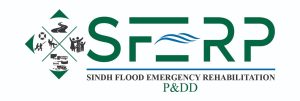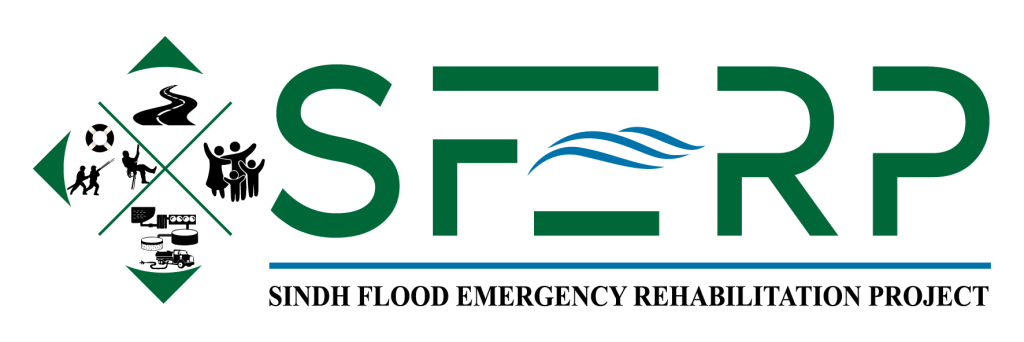Introduction
Sindh Flood Emergency Rehabilitation Project is a multi-dimensional project with diversified interventions including:
- Infrastructure Rehabilitation
- Livelihoods Restoration
- Institutional Strengthening for Resilience and Technical Assistance
- Project Management.
This mega project is being executed all over Sindh involving a variety of stakeholders mainly the poor, small and medium sized farmers, tenants, women, female headed hhs, laborers, equipment suppliers, contractor, NGOs and all others linked directly or indirectly with public infrastructure sector. As such, multifarious issues and constraints may arise as a result of the project execution. In this situation, with an inadequate means to voice and resolve grievances, communities/stakeholders/staff/contractors/partners may turn to other venues to protest where the risk level for the project may dramatically increase. Alternatively, they may feel powerless to act, while their grievances—unresolved, ignored, or scorned, accumulate over time, eventually erupting into intractable stakeholders opposition. Therefore, the complaints / grievances / feedback/ quarries/ suggestion are to be addressed through a well-organized Grievance Redressal Mechanism at the Department, project and project partners level for the success of the project.
Main objectives of the GRM
- To systematically process complaints received from the Project Affected Persons (PAPs) and other stakeholders and provide a prompt, transparent and fair response and resolution without reprisals;
- To provide project staff with practical suggestions/feedback that allows them to be more effective, accountable, transparent, and responsive to beneficiaries;
- Increasing stakeholder involvement in the project
- To train staff of the project so as to handle grievances effectively and amicably.
- To redress all types of grievances including technical, social, environmental, procurement and financial management aspects of the project.
- The proposed GRM should ensure responsiveness at all level of complaint handling and confidentiality to the PAPs regarding their complaints.
- The GRM is expected to address different types of complaints such as Compensation, Environmental issues (e.g. noise, pollution, solid waste management, flora/fauna, etc.); Social issues (Exclusion, Inclusion); Gender Based Violence (GBV), Sub projects sites selections, Procurement & Financial and others.
GRM structure
The SFERP Grievance Redressal Mechanism (GRM) is established at three levels starting from the site, PIU and Project Steering Committee (PSC).
The GRC composition at different levels is given below.
Site/ Community Composition
- Community Liaison Officer (CLO) – Convener
- Grievance Focal Points (GFPs)
- Contractors/ SMPs
- Relevant Field(s) Manager
- Co-opted Members
GRC PIU Composition
- Deputy Project Director
- Social Safeguard & Resettlement Specialist (Convener)
- Environment Specialist
- Gender Specialist
- PMIC Representative (s)
- Co-opted Members
PSC Composition
- Chairman P&DD Board
- Project Director
- Secretaries of line Departments Social Safeguard & Resettlement Specialist Convener
- Environment Specialist
- Gender Specialist
- Co-opted Members
GRM Monitoring
The GR Cell will enter the project affected people (PAPs) concerns/grievances at site level. The PIU gender specialist will be responsible for managing GBV and SEA/SH-related complaints at the project/PIU level. SFERP PIU will develop specific procedures to ensure complainants are able to register their grievances confidentially, and in a discreet manner. GBV/SEA/SH related complaints will be communicated to World Bank no later than 48 hours after being received by the GR Cell (site level) or by the GRC (PIU level).
The GRC will record the complaint, investigation, and subsequent actions and results in the monthly Environmental Management and Monitoring reports and Monthly Progress Report by Contractors and SMPs. In the construction and initial operational periods covered by loan covenants, the PIU will periodically report progress to the World Bank, including reporting complaints and their resolution. The tracking and documenting of grievance resolutions within the GRC PIU will include the following elements:
- tracking forms and procedures for gathering information from project personnel and complainant(s);
- computerized grievance database with dedicated staff to update the database routinely;
- systems with the capacity to analyze information to recognize grievance patterns, identify any systemic causes of grievances, promote transparency, publicize how complaints are being handled, and periodically evaluate the overall functioning of the mechanism;
- processes for informing stakeholders about the status of a case; and
- procedures to retrieve data for reporting purposes, including the periodic reports to the PIU and GRC, reports into the monthly ESMP Compliance monitoring report to the World Bank.
- an annual qualitative review of all complaints processed (ensuring filters such as gender, type of complaint, resolution status, time taken, intake channel, district/site, etc.) will also be undertaken to analyze the efficacy of the system.
The GRM will be provided the necessary budget required for its efficient functioning.


